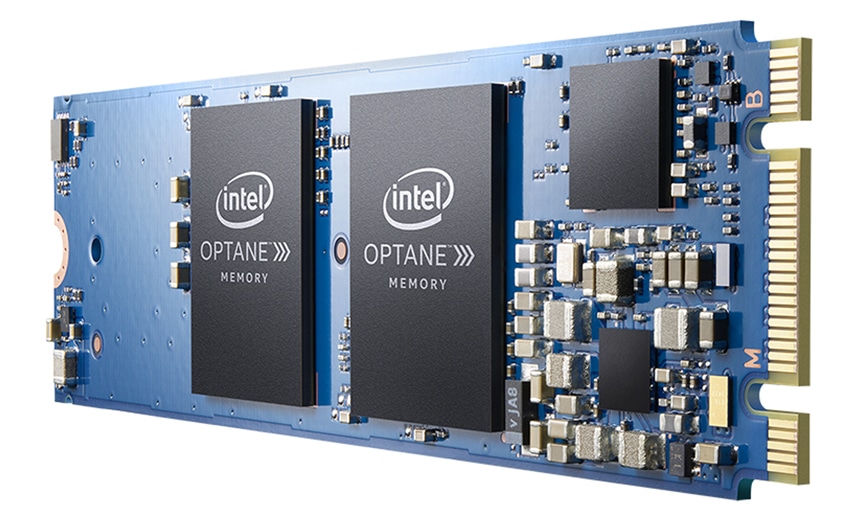Last week Intel released the first product in its Optane family (previously 3D XPoint), the Optane SSD DC P4800X, an enterprise SSD. Today Intel is revealing the second product in its Optane line, the Intel Optane Memory. This new product is aimed more at PC users as a way to increase performance and responsiveness while allowing end users to still have large capacity HDDs as their primary storage.

Though mobile devices are slowly taking over as the main conduit between people and things such as the Internet, applications, and communicating with others, there is still very solid footing for computers. Computers are still used for gaming, storing and editing content such as 4K video, and a place to store the thousands of photos generated. All of the above can take up some serious space. SSDs improve performance, but to get can get pricy as capacity increase (for example a 4TB WD Black HDD can be purchased for as little as $210, where as a 4TB Samsung Evo SSD runs about $1,300). What if there were a way to boost performance of a high capacity HDD, not quite as high as an SSD, but somewhere in between?
Intel Optane Memory sits in between the system's memory and the storage. According to Intel, user will see up to 28% faster overall system performance, up to 14 times the performance of storage, up to 6 times the performance on certain applications, and gamers can see games launch 18% faster and level loads up to 58% faster. Optane Memory speeds application and large file load times by ensuring the data contained in a PC’s storage is more readily accessible, which means an overall faster, more responsive experience.
Intel Optane Memory specifications:
- Capacity: 16GB, 32GB
- Interface PCIe 3.0×2 with NVMe interface
- Form factor: M.2 2280-S3-B-M
- Performance (at queue depth 4)
- Sequential read/write: Up to 1,200/280MB/s
- 4KB Random read/write: Up to 300K/70K IOPS
- Latency
- Read: 6μs
- Write: 16μs
- Reliability
- MTBF: 1.2 million hours
- UBER: 1 sector per 10^17 bits read
- Endurance: 100GB WPD
- Power
- 3.3V Supply Rail
- Active: 3.5W
- Drive Idle: 900mW to 1.2W
- OS support: Windows 10 64bit
- Physical
- Height: Up to 1.5mm
- Weight: Up to 40g
Availability and Pricing
Intel Optane Memory is expected to be available on April 24, 2017 with pricing at $44 for the 16GB and $77 for the 32GB module.




 Amazon
Amazon